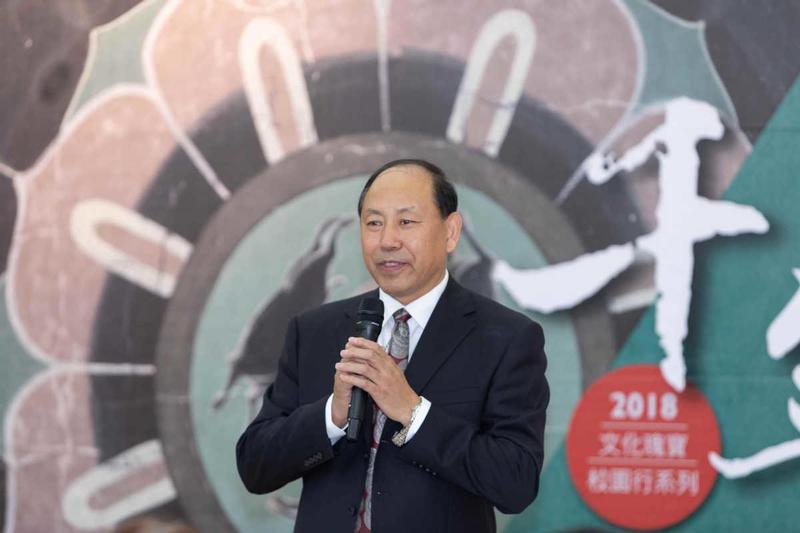 This undated file photo shows part of a fresco from the Mogao Grottoes in Dunhuang, Gansu province. (PHOTO / XINHUA)
This undated file photo shows part of a fresco from the Mogao Grottoes in Dunhuang, Gansu province. (PHOTO / XINHUA)
A "digital donor" project to help protect cave No 55 at the Mogao Grottoes heritage site in Dunhuang, Gansu province, had raised over 1.9 million yuan (US$290,000) by last month, organizers said.
Initiated in 2018, the crowdfunding program enables people to donate 0.9 yuan on WeChat after watching a short video about the history of the cave, which is one of the Buddhist art treasures at the world-famous site.
Yang Xiuqing, director of the China Dunhuang Grottoes Conservation Research Foundation and an initiator of the project, said it encourages the public, especially young people, to learn about the relics and help in their protection.
Initiated in 2018, a crowdfunding program enables people to donate 0.9 yuan on WeChat after watching a short video about the history of cave No 55 at the Mogao Grottoes heritage site in Dunhuang, Gansu province
The Mogao Grottoes, a UNESCO World Heritage site with numerous ancient murals and Buddhist statues in 735 caves, have faced challenges due to natural erosion and human intrusion. The number of tourist visits to the grottoes surged from 26,000 in 1979, when they opened to the public, to a peak of 2.2 million in 2019.
The number of visits fell to 1.39 million last year due to the novel coronavirus outbreak.
Due to their age, the relics need to undergo continuous preservation work, experts said. It's not unusual for tourists to see statues missing limbs and faded frescoes at the site.
"Though the country is increasing preservation investment, the protection work needs the participation of more people," Yang said, adding the success of the program showed the growing interest of young people in Dunhuang culture.
"It's an art treasure house, with complete and rich content, that has survived despite a changing history," he said.
"It also offers precious historic material to study politics, economics, warfare, culture, the art of the ancient Chinese and exchanges with foreign civilizations."
 Yang Xiuqing speaks at an exhibition on the Mogao Grottoes held in Taiwan in 2018. (PHOTO PROVIDED TO CHINA DAILY)
Yang Xiuqing speaks at an exhibition on the Mogao Grottoes held in Taiwan in 2018. (PHOTO PROVIDED TO CHINA DAILY)
The grottoes were dug thousands of years ago by Buddhist believers, including monks, royalties, officials, merchants and ordinary people, who made donations for their construction and maintenance.
"Now, we hope to cultivate the new generation of digital donators to help the relics survive another 1,000 years," Yang said.
A crowdfunding project for cave No 427 was launched recently and has already received 100,000 yuan from one group.
For the sake of openness and transparency, the foundation tells donors how their funds are being spent. Information on donations, their use, and financial reports are also available on the foundation's website, said Yang Xiuqing, director of the China Dunhuang Grottoes Conservation Research Foundation
Since the foundation began in 1994, it has received funding from individuals, companies and institutions both at home and abroad. However, in recent years most of the costs of maintaining the grottoes have been covered by government subsidies.
The funding is used for restoration and maintenance work, scientific research, improvement of the surrounding environment, cultural inheritance and promotion, digital exhibitions and staff training, Yang said.
For the sake of openness and transparency, the foundation tells donors how their funds are being spent. Information on donations, their use, and financial reports are also available on the foundation's website, he added.
One of their first donors was the late Japanese painter Hirayama Ikuo. He visited the Mogao Grottoes in 1979 and developed an interest in the ancient Silk Road, Buddhism and Dunhuang culture. He visited Dunhuang multiple times, and donated equipment to protect the treasures. Revenue from one of his art exhibitions was given to the Dunhuang Academy, which helped build the foundation.
Ma Ruimin and Jiang Linhong, a couple from Shanghai, donated 3 million yuan to the foundation, saying they were deeply impressed by the grottoes' art and hoped to contribute more in the future. "It's what we have wanted to do for a long time. And it's just the beginning of our part in retaining and promoting the value of the Mogao Grottoes," Ma said.
Matuki Kazumichi, from Japan, visited Dunhuang in 2004 and donated US$2,000 to the Dunhuang Academy every year until 2010. Since then, he has donated 100,000 yen (US$913) to the foundation annually.
READ MORE: Charity Law to address crowdfunding issues
"Though I cannot contribute more, I want to express my love for Dunhuang culture and make efforts in the relics' protection," he said, while making his donation.
Contact the writers at chenmeiling@chinadaily.com.cn


